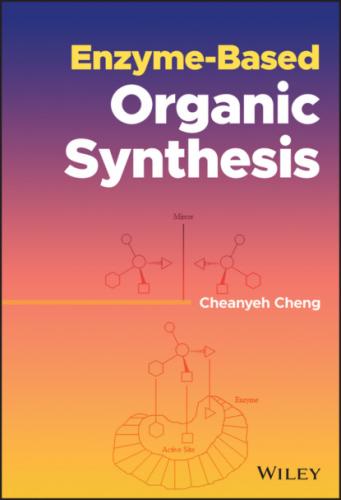Scheme 3.15 Protein acetylation with CRTase and DAMC without involving acetyl‐CoA.
Source: Arora et al. [71].
The model acetoxy‐coumarins (AC), 7,8‐diacetoxy‐4‐methylcoumarin (DAMC), was shown to possess radical scavenger property by interacting with free radical to remove its acetyl group and give the acetyl cation (CH3CO+) and the phenoxyl radical [68]. The antioxidant action of DAMC is independent on the formation of parent 7,8‐dihydroxy‐4‐methylcoumarin (DHMC). Calreticulin (CR) catalyzes the transfer of acetyl groups from AC to certain proteins [69, 70]; thus, CR was termed calreticulin transacetylase (CRTase). The enzymatic acetylation of protein by CRTase is unique and characterized as without involving acetyl‐CoA. CRTase of rat tracheal smooth muscle cells (TSMC) was characterized the specificity of DAMC for acetylating and activating nitric oxide synthase (NOS) as illustrated by Scheme 3.15 [71]. Since the activated TSMC NOS will enhance NO in airway cells, and NO is believed to ameliorate the exacerbation of airway diseases such as asthma and coronary obstructive pulmonary diseases (COPD), AC may be expected to find therapeutic applications in respiratory diseases [71, 72].
References
1 1 Guo, F. and Berglund, P. (2017). Green Chem. 19: 333–360.
2 2 Fuchs, M., Farnberger, J.E., and Kroutil, W. (2015). Eur. J. Org. Chem. 6965–6962.
3 3 Truppo, M.D., Rozzell, J.D., Moore, J.C., and Turner, N.J. (2009). Org. Biomol. Chem. 7: 395–398.
4 4 Stewart, J.D. (2001). Current Opin. Chem. Biol. 5: 120–129.
5 5 Park, E., Kim, M., and Shin, J.‐S. (2010). Adv. Synth. Catal. 352: 3391–3398.
6 6 Land, H., Hendil‐Forssell, P., Martinelle, M., and Berglund, P. (2016). Catal. Sci. Technol. 6: 2897–2900.
7 7 Kohls, H., Anderson, M., Dickerhoff, J. et al. (2015). Adv. Synth. Catal. 357: 1808–1814.
8 8 Sattler, J.H., Fuchs, M., Mutti, F.G. et al. (2014). Angew. Chem., Int. Ed. 53: 14153–14157.
9 9 Mutti, F.G. and Kroutil, W. (2012). Adv. Synth. Catal. 354: 3409–3413.
10 10 Fuchs, C.S., Simon, R.C., Riethorst, W. et al. (2014). Biorg. Med. Chem. 22: 5558–5562.
11 11 Savile, C.K., Janey, J.M., Mundorff, E.C. et al. (2010). Science 329: 305–309.
12 12 Truppo, M.D., Strotman, H., and Hughes, G. (2012). ChemCatChem 4: 1071–1074.
13 13 Andrade, L.H., Kroutil, W., and Jamison, T.F. (2014). Org. Lett. 16: 6092–6095.
14 14 Wohlgemuth, R. (2005). Chimia 59: 735–740.
15 15 Křen, V. and Thiem, J. (1997). Chem. Chem. Soc. Rev. 26: 463–473.
16 16 Gloster, T.M. (2014). Curr. Opin. Chem. Biol. 28: 131–141.
17 17 Leloir, L.F. (1971). Science 172: 1299–1303.
18 18 Koeller, K.M. and Wong, C.‐H. (2000). Chem. Rev. 100: 4465–4493.
19 19 Tsuji, S. (1996). J. Biochem. 120: 1–13.
20 20 Sears, P. and Wong, C.‐H. (1998). Cell. Mol. Life Sci. 54: 223–252.
21 21 Wong, C.‐H., Haynie, S.L., and Whitesides, G.M. (1982). J Org. Chem. 47: 5416–5418.
22 22 Křen, V. (1997). Top. Curr. Chem. 186: 45–64.
23 23 Riva, S.J. (2002). Mol. Catal. B Enzym. 19‐20: 43–54.
24 24 Kaulpiboon, J., Pongsawasdi, P., and Zimmermann, W. (2007). FEBS J. 274: 1001–1010.
25 25 Van der Veen, B.A., van Alebeek, G.‐J.W.M., Uitdehaag, J.C.M. et al. (2000). Eur. J. Biochem. 267: 658–665.
26 26 Pitcher, J., Smythe, C., and Cohen, P. (1988). Eur. J. Biochem. 176: 391–395.
27 27 Hurley, T.D., Stout, S., Miner, E. et al. (2005). J. Biol. Chem. 280: 23892–23899.
28 28 Smythe, C. and Cohen, P. (1991). Eur. J. Biochem. 200: 625–631.
29 29 Zeqiraj, E., Tang, X., Hunter, R.W. et al. (2014). Proc. Natl. Acad. Sci. USA 111: E2831–E2840.
30 30 Zhang, Z., Gildersleeve, J., Yang, Y.‐Y. et al. (2004). Science 303: 371–373.
31 31 Wong, C.‐H. (2005). J. Org. Chem. 70: 4219–4225.
32 32 Rush, R.S., Derby, P.L., Smith, D.M. et al. (1995). Anal. Chem. 67: 1442–1452.
33 33 Sears, P. and Wong, C.‐H. (2001). Science 291: 2344–2350.
34 34 Macmillan, D. and Bertozzi, C.R.A. (2004). Chem. Int, Ed. 43: 1355–1359.
35 35 Wang, L. and Schult, P.G. (2005). Angew. Chem. Int. Ed. 44: 34–66.
36 36 Liu, H., Wang, L., Brock, A. et al. (2003). J. Am. Chem. Soc. 125: 1702–1703.
37 37 Xu, R., Hanson, S.R., Zhang, Z. et al. (2004). J. Am. Chem. Soc. 126: 15654–15655.
38 38 McMurry, J.; Castellion, M.E. (1999). Fundamentals of General, Organic, and Biological Chemistry, 3rd Ed., Prentice Hall, New Jersey: Upper Saddle River, pp. 673.
39 39 Uliana, A.S., Crespo, P.M., Martina, J.A. et al. (2006). J. Biol. Chem. 281: 32852–32860.
40 40 Giraudo, C.G. and Maccioni, H.J.F. (2003). J. Biol. Chem. 278: 40262–40271.
41 41 Chapman, E. and Wong, C.‐H. (2002). Bioorg. Med. Chem. 10: 551–555.
42 42 Renzone, G., Salzano, A.M., Arena, S.D. et al. (2006). J. Proteome Res. 5: 2019–2024.
43 43 Jin, Y., Molt, R.W. Jr., and Blackburn, G.M. (2017). Top. Curr. Chem.(Z) 375: 36–66.
44 44 Thiaville, J.J., Flood, J., Yurgrl, S. et al. (2016). ACS Chem. Biol. 11: 2304–2311.
45 45 Sfeir, C., Fang, P.‐A., Jayaraman, T. et al. (2014). Acta Biomater. 10: 2241–2249.
46 46 Rivière, L., Moreau, P., Allmann, S. et al. (2009). PNAS 106: 12694–12699.
47 47 Kuang, Y., Salem, N., Wang, F. et al. (2007). J. Biochem. Biophys. Methods 70: 649–655.
48 48 Tan, D.‐X., Hardeland, R., Back, K. et al. (2016). J. Pineal Res. 61: 27–40.
49 49 Weissbach, H., Redfield, B.G., and Axelrod, J. (1960). Biochim. Biophys. Acta 43: 352–353.
50 50 Axelrod, J. and Weissbach, H. (1960). Science 131: 1312.
51 51 Liu, J., Ng, T., Rui, Z. et al. (2014). Angew. Chem. Int. Ed. 53: 136–139.
52 52 Witkop, B. (1998). Heterocycles 49: 9–27.
53 53 Granacher, R.P. and Baldessarini, R.J. (1976). Clin. Neuropharmacol. 1: 63–79.
54 54 Brockhausen, I., Nair, D.G., Chen, M. et al. (2016). Biochem. Cell Biol. 94: 197–204.
55 55 Vetting, M.W., de Carvalho, L.P.S., Yu, M. et al. (2005). Arch. Biochem. Biophys. 433: 212–226.
56 56
